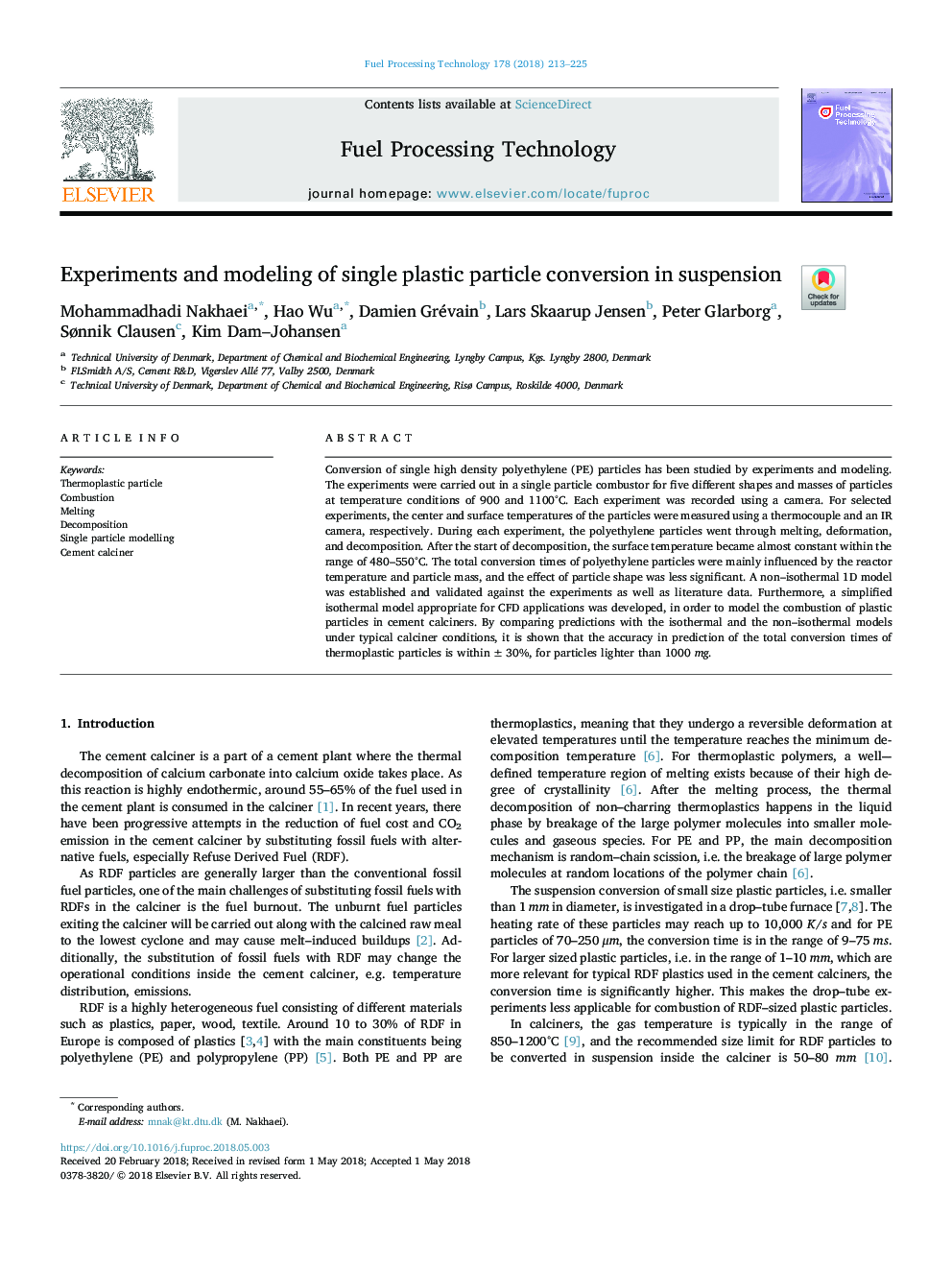| Article ID | Journal | Published Year | Pages | File Type |
|---|---|---|---|---|
| 6656290 | Fuel Processing Technology | 2018 | 13 Pages |
Abstract
Conversion of single high density polyethylene (PE) particles has been studied by experiments and modeling. The experiments were carried out in a single particle combustor for five different shapes and masses of particles at temperature conditions of 900 and 1100°C. Each experiment was recorded using a camera. For selected experiments, the center and surface temperatures of the particles were measured using a thermocouple and an IR camera, respectively. During each experiment, the polyethylene particles went through melting, deformation, and decomposition. After the start of decomposition, the surface temperature became almost constant within the range of 480-550°C. The total conversion times of polyethylene particles were mainly influenced by the reactor temperature and particle mass, and the effect of particle shape was less significant. A non-isothermal 1D model was established and validated against the experiments as well as literature data. Furthermore, a simplified isothermal model appropriate for CFD applications was developed, in order to model the combustion of plastic particles in cement calciners. By comparing predictions with the isothermal and the non-isothermal models under typical calciner conditions, it is shown that the accuracy in prediction of the total conversion times of thermoplastic particles is within ± 30%, for particles lighter than 1000 mg.
Related Topics
Physical Sciences and Engineering
Chemical Engineering
Chemical Engineering (General)
Authors
Mohammadhadi Nakhaei, Hao Wu, Damien Grévain, Lars Skaarup Jensen, Peter Glarborg, Sønnik Clausen, Kim Dam-Johansen,
